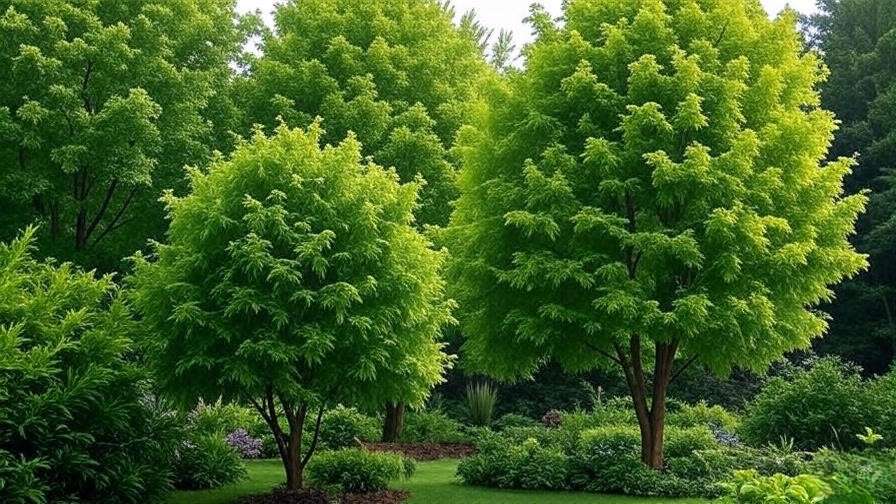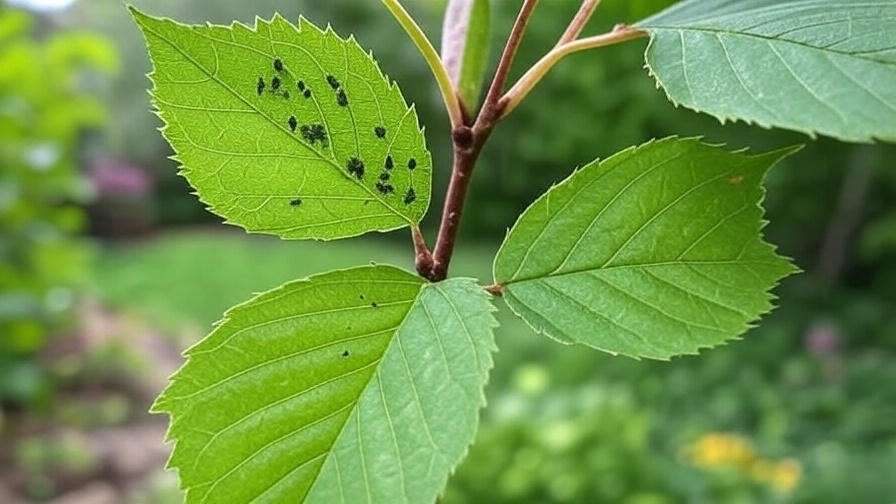Imagine transforming your garden into a lush, vibrant oasis with the timeless elegance of hornbeam trees! These versatile, hardy trees are a gardener’s dream, offering dense foliage, stunning autumn colors, and the perfect blend of structure and charm. Whether you’re dreaming of a stately hedge or a standalone specimen, hornbeams are a low-maintenance choice that thrives with the right care. In this comprehensive guide, we’ll share seven expert-backed tips to ensure your hornbeam trees flourish, addressing common challenges and unlocking their full potential. Drawing on insights from seasoned arborists and horticulturists, this article is your roadmap to growing healthy, thriving hornbeams in any garden setting. 🌿
Hornbeam trees, known scientifically as part of the Carpinus genus, are prized for their adaptability and aesthetic appeal. However, improper care can lead to stunted growth or pest issues, which is why we’ve crafted this guide to help both novice and experienced gardeners succeed. From choosing the right variety to mastering pruning techniques, let’s dive into the essentials of hornbeam tree care! 🌟
Why Choose Hornbeam Trees for Your Garden? 🌟
Overview of Hornbeam Trees
Hornbeam trees (Carpinus spp.) are deciduous beauties native to temperate regions of the Northern Hemisphere, including Europe, Asia, and North America. Renowned for their dense, serrated leaves and sturdy wood, they’re a favorite for ornamental gardens and functional hedges. Their vibrant green foliage turns golden or coppery in fall, adding seasonal charm. Hornbeams are also eco-friendly, supporting local wildlife like birds and pollinators. Their versatility makes them ideal for privacy screens, shade providers, or striking focal points in landscapes. 🌍

Popular Varieties for Gardens
Not all hornbeam trees are created equal! Here are two popular species for home gardens:
- European Hornbeam (Carpinus betulus): A robust choice for hedges, growing 30–40 feet tall with a dense, formal appearance. It thrives in USDA zones 4–8.
- American Hornbeam (Carpinus caroliniana): Smaller, reaching 20–30 feet, with a more natural, open form. Perfect for woodland gardens in zones 3–9.
| Variety | Height | Best Use | Hardiness Zones |
|---|---|---|---|
| European Hornbeam | 30–40 ft | Hedges, screens | 4–8 |
| American Hornbeam | 20–30 ft | Ornamental, woodland | 3–9 |
| C. betulus ‘Fastigiata’ | 25–35 ft | Compact spaces | 4–8 |
Expert Tip: Choose Carpinus betulus ‘Fastigiata’ for smaller yards due to its upright, narrow growth. 🌱
Tip 1 – Selecting the Right Hornbeam Variety 🌳
Matching Variety to Your Climate
Hornbeam trees are adaptable, but selecting a variety suited to your climate is crucial for success. Most hornbeams thrive in USDA hardiness zones 4–8, tolerating cold winters and moderate summers. For colder regions (zone 3), the American hornbeam is a better bet due to its resilience. In warmer climates (zone 8), ensure adequate water to prevent heat stress. Check your local USDA zone and consult with a nursery to confirm compatibility. 🌡️
Choosing Based on Garden Size
Your garden’s size dictates the best hornbeam variety. For small urban plots, Carpinus betulus ‘Fastigiata’ or dwarf cultivars like ‘Columnaris Nana’ are ideal, staying under 20 feet. Larger landscapes can accommodate the spreading European hornbeam. Consider spacing: allow 3–5 feet between trees for hedges or 15–20 feet for standalone specimens to avoid overcrowding. 🌿
Expert Insight: “Choosing a hornbeam variety tailored to your space and climate is the foundation of a thriving tree,” says Dr. Jane Ellis, a horticulturist with 20 years of experience. “Always prioritize disease-resistant cultivars to minimize maintenance.”
Tip 2 – Planting Hornbeam Trees for Success 🌱
Best Time to Plant
Timing is everything when planting hornbeam trees. Early spring or fall is ideal, as cooler temperatures and moist soil promote root establishment. Avoid planting in summer’s heat or winter’s frost to reduce stress on young trees. Aim for a period with consistent rainfall to ease the transition. 🌧️

Site Selection and Soil Preparation
Hornbeams prefer well-drained, loamy soil with a pH of 6.0–7.5. They tolerate clay or sandy soils but struggle in waterlogged areas. Choose a site with partial to full sun (4–6 hours daily) for optimal growth, though they can handle light shade. Before planting, test your soil’s pH and nutrient levels using a home kit or local extension service. Amend with organic compost or aged manure to boost fertility. 🚜
Planting Steps
- Dig the Hole: Make it twice as wide and as deep as the root ball.
- Position the Tree: Place the root ball level with the ground, ensuring the root flare is visible.
- Backfill: Refill with a mix of native soil and compost, tamping gently to remove air pockets.
- Water Thoroughly: Soak the soil to settle roots, then mulch with 2–3 inches of wood chips, keeping mulch away from the trunk.
- Stake if Needed: Use stakes for tall or windy sites to stabilize young trees.
Visual Aid Idea: An infographic showing proper planting depth and spacing can help readers visualize the process. 🌳
Tip 3 – Watering and Feeding Your Hornbeam Trees 💧
Watering Needs by Season
Young hornbeam trees need consistent moisture to establish strong roots. Water deeply (1–2 inches) once or twice weekly during the first two years, especially in dry spells. Mature hornbeams are more drought-tolerant but benefit from occasional deep watering during prolonged droughts. In summer, monitor soil moisture and avoid letting it dry out completely. In winter, reduce watering unless the tree is newly planted. 💦
Fertilizing for Growth
Fertilize hornbeams in early spring with a balanced 10-10-10 fertilizer or organic compost to encourage healthy growth. Apply 1–2 pounds of fertilizer per 100 square feet of root zone, avoiding direct contact with the trunk. Over-fertilizing can lead to weak, leggy growth, so follow package instructions carefully. For organic options, try fish emulsion or well-rotted manure. 🌱
Expert Tip: “Test your soil every 2–3 years to avoid nutrient imbalances,” advises arborist Tom Carter. “Hornbeams don’t need heavy feeding, but consistent care pays off.”
Tip 4 – Pruning and Shaping Hornbeam Trees ✂️
When and Why to Prune
Pruning keeps hornbeam trees healthy and aesthetically pleasing. The best time is late winter or early spring before new growth begins, as this minimizes stress and promotes healing. Pruning removes dead or damaged branches, improves air circulation, and shapes hedges or ornamental trees. Regular pruning also prevents dense growth from harboring pests. 🌿
Pruning Techniques
- Tools: Use sharp, clean bypass shears or loppers for precise cuts.
- Hedges: Trim annually to maintain shape, cutting back to 2–3 inches of new growth.
- Standalone Trees: Remove crossing branches or suckers at the base, preserving the natural canopy.
- Safety: Never remove more than 25% of the canopy in one season to avoid stress.
Case Study: A UK gardener transformed their backyard with a Carpinus betulus hedge, pruning twice yearly to maintain a crisp, 6-foot barrier. Photos of their lush, uniform hedge inspire readers to try similar projects. 🌳
Tip 5 – Protecting Hornbeam Trees from Pests and Diseases 🐞
Common Pests
Hornbeam trees are relatively pest-resistant, but they can occasionally attract unwanted visitors. Common culprits include:
- Aphids: These tiny sap-suckers cause leaf curling and sticky residue. Control them with a strong water spray or insecticidal soap for an organic approach.
- Scale Insects: These appear as small, waxy bumps on branches, weakening the tree. Apply neem oil or consult a professional for systemic treatments.
- Caterpillars: Leaf-eating caterpillars can defoliate young trees. Hand-pick them or use Bacillus thuringiensis (Bt) for eco-friendly control.

Regularly inspect your hornbeams, especially in spring and summer, to catch infestations early. Healthy trees are less susceptible, so proper care is your first line of defense. 🛡️
Disease Prevention
Hornbeams are hardy but can face a few diseases if conditions aren’t ideal:
- Powdery Mildew: A white, powdery coating on leaves, often due to poor air circulation. Ensure proper spacing (3–5 feet for hedges) and prune to improve airflow. Fungicides may be used as a last resort.
- Root Rot: Caused by overly wet soil, this can kill trees. Avoid waterlogged sites and improve drainage with organic amendments.
- Canker: Fungal infections causing sunken bark patches. Remove affected branches and sterilize tools to prevent spread.
Expert Insight: “Integrated pest management (IPM) is key for hornbeams,” says arborist Sarah Nguyen, with 15 years of experience. “Combine cultural practices, like proper watering, with targeted treatments to keep trees thriving.” 🌱
Tip 6 – Seasonal Care for Hornbeam Trees 🍂
Spring and Summer Care
Spring and summer are active growth periods for hornbeam trees, requiring attentive care:
- Watering: Ensure young trees receive 1–2 inches of water weekly, especially during dry spells. Mulch with 2–3 inches of organic material (e.g., bark chips) to retain moisture and suppress weeds.
- Monitoring: Check for pests or early signs of stress, like yellowing leaves. Address issues promptly to prevent escalation.
- Fertilizing: Apply a balanced fertilizer in early spring to support new growth. Avoid late-season feeding to prevent tender growth before winter.
Tip: Create a drip irrigation system for consistent watering in larger gardens. 💧

Fall and Winter Preparation
As seasons change, prepare your hornbeams for cooler months:
- Leaf Cleanup: Rake fallen leaves to prevent fungal buildup. Compost healthy leaves for garden use.
- Winter Mulching: Add a 3–4 inch layer of mulch around the base (avoiding the trunk) to insulate roots in cold climates.
- Frost Protection: Wrap young trees with burlap in zones 4 or colder to shield against frost and sunscald, a condition where winter sun damages bark.
Visual Aid: A downloadable seasonal care checklist can help readers stay on track with tasks like mulching and pest checks. 📅
Tip 7 – Enhancing Your Garden with Hornbeam Trees 🎨
Using Hornbeams for Landscaping
Hornbeam trees are landscaping superstars, offering endless design possibilities:
- Hedges and Screens: European hornbeams create dense, formal hedges perfect for privacy or windbreaks. Trim annually for a polished look.
- Ornamental Focal Points: A standalone American hornbeam, with its graceful branching, adds elegance to lawns or woodland gardens.
- Mixed Borders: Pair hornbeams with shade-loving plants like hostas or ferns for a cohesive look.
Example: A suburban gardener used a row of Carpinus betulus to create a living fence, reducing noise from a nearby road while adding visual appeal. 🌳

Supporting Wildlife
Hornbeams are a boon for local ecosystems. Their dense foliage provides nesting sites for birds, while their seeds attract finches and squirrels. Pollinators like bees visit spring catkins, boosting biodiversity. To maximize wildlife benefits, avoid heavy pesticide use and plant native perennials nearby, such as coneflowers or milkweed. 🐦
Expert Tip: “Hornbeams are a cornerstone of wildlife-friendly gardens,” notes landscape designer Emma Larson. “Their structure supports birds year-round, making them a sustainable choice.” 🌿
Common Mistakes to Avoid When Growing Hornbeam Trees 🚫
Even experienced gardeners can make missteps with hornbeam trees. Here are pitfalls to avoid:
- Overwatering: Soggy soil leads to root rot. Use a soil moisture meter to gauge needs.
- Planting in Poor Soil: Hornbeams dislike compacted or waterlogged sites. Test and amend soil before planting.
- Improper Pruning: Cutting too much or at the wrong time stresses trees. Stick to late winter pruning and remove only 20–25% of growth.
- Ignoring Nutrient Needs: Skipping soil tests can lead to deficiencies. Regular testing ensures balanced fertilization.
Troubleshooting Guide:
| Issue | Symptoms | Solution |
|---|---|---|
| Yellowing Leaves | Overwatering or nutrient lack | Check drainage; test soil nutrients |
| Stunted Growth | Poor soil or insufficient light | Amend soil; ensure 4–6 hours of sun |
| Leaf Drop | Pest infestation or drought | Inspect for pests; adjust watering |
FAQs About Hornbeam Tree Care ❓
Q1: How fast do hornbeam trees grow?
A: Hornbeams grow moderately, about 1–2 feet per year, depending on conditions. European hornbeams may grow faster in ideal settings.
Q2: Can hornbeam trees grow in shade?
A: Yes, hornbeams tolerate partial shade, though they prefer 4–6 hours of sunlight for optimal health.
Q3: Are hornbeam trees good for small gardens?
A: Absolutely! Dwarf varieties like Carpinus betulus ‘Columnaris Nana’ are perfect for compact spaces.
Q4: How do I revive a struggling hornbeam tree?
A: Check for overwatering, pests, or nutrient deficiencies. Adjust care based on symptoms and consult an arborist for severe cases.
Q5: What’s the difference between hornbeam and beech trees?
A: Hornbeams (Carpinus) have serrated leaves and harder wood, while beeches (Fagus) have smooth leaves and retain them longer in winter.
Conclusion – Grow Thriving Hornbeam Trees with Confidence 🌿
Growing healthy hornbeam trees is within reach for any gardener with the right knowledge. By selecting the perfect variety, planting correctly, and following our seven essential tips—covering watering, pruning, pest control, and more—you’ll create a stunning, sustainable addition to your garden. These resilient trees not only elevate your landscape but also support local wildlife and provide year-round beauty. Start your hornbeam journey today, and share your experiences in the comments below! For more tree care insights, explore our articles on beech trees or small-space gardening. 🌳













